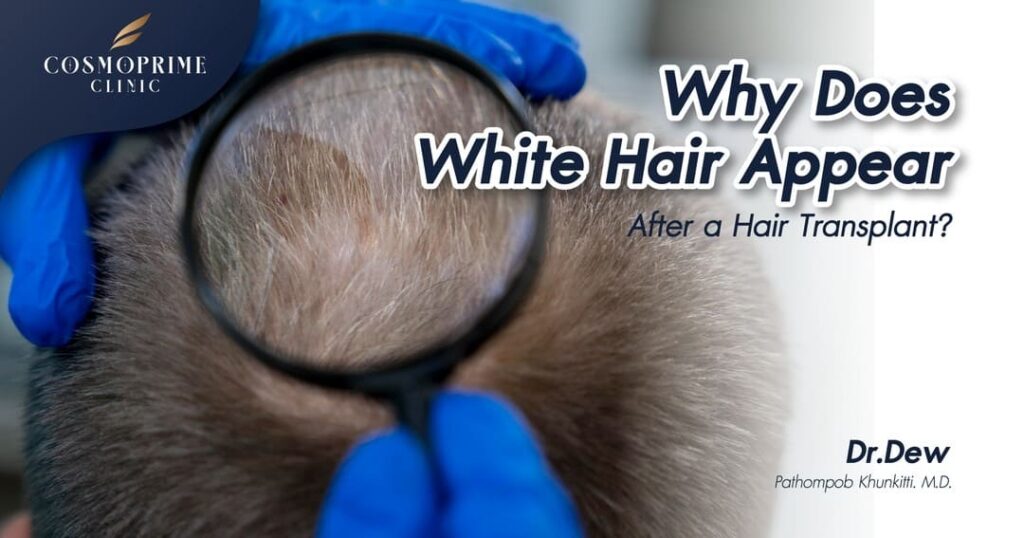Experiencing white or gray hair after a hair transplant? Learn why this occurs, how the hair pigmentation process works, and whether it’s a temporary condition.
Understanding White Hair After a Hair Transplant
While rare, some patients may experience white or gray hair in the areas affected by a hair transplant. This can occur:
- In the donor area (where hair grafts are extracted).
- In the recipient area (where new hair follicles are implanted).
- In existing hair near the transplant site.
If you’re noticing this phenomenon, don’t worry—it’s usually temporary and can resolve on its own. Let’s explore why white hair appears after a hair transplant and what you can expect during recovery.

How Hair Gets Its Color – The Role of Melanin
The natural color of your hair is determined by a pigment called melanin, produced by specialized cells called melanocytes.
👉 Melanin Production Process:
- Melanocytes are located at the base of hair follicles in the dermis (the deeper layer of skin).
- These cells produce melanin, which is then delivered to growing hair strands, giving them their natural color.
- As long as melanocytes function properly, hair maintains its original color.
Ref: https://www.ncbi.nlm.nih.gov/pmc/articles/PMC6371733/
Why Does White Hair Appear After a Hair Transplant?
During a hair transplant, the scalp undergoes minor trauma due to the extraction and implantation process. This trauma can temporarily affect the melanocytes’ ability to produce melanin, resulting in white or gray hair.
1. Stress on the Hair Follicles
The extraction of hair grafts (usually from the back of the head) creates tiny wounds on the scalp. This can cause temporary stress on the surrounding cells, including melanocytes, leading to a pause in melanin production.
2. Healing and Cell Recovery
As the scalp heals, the melanocytes may take 2-4 weeks to resume normal melanin production. During this period, new hair may grow without pigment, appearing white or gray.
3. Temporary Nature of White Hair
Once the dermis layer fully recovers, melanocytes typically return to normal function, and new hair begins to regain its natural color.
How Long Will White Hair Last After a Hair Transplant?
In most cases, white or gray hair is temporary and resolves within a few months as the scalp heals. Based on patient observations:
- White hair typically appears within 2-4 weeks after surgery.
- Normal hair pigmentation usually returns within 3-6 months.
- In some cases, it may take up to 12 months for complete restoration.
Can White Hair Be Prevented After a Hair Transplant?
While there’s no guaranteed way to prevent white hair, the following steps may help support faster healing:
✅ Follow Post-Operative Care: Adhere to your clinic’s aftercare instructions to promote healthy scalp recovery.
✅ Healthy Lifestyle: Eat a balanced diet rich in vitamins (especially Vitamin B12 and antioxidants) to support cell regeneration.
✅ Minimize Stress: Chronic stress may further impact melanocyte activity—practice relaxation techniques for better recovery.
When to Consult a Specialist
If white hair persists beyond 6-12 months or is accompanied by other symptoms (e.g., excessive hair shedding or scalp irritation), it’s best to consult your hair transplant specialist.
Conclusion – White Hair Is Temporary
White hair after a hair transplant is a common but temporary side effect caused by stress on melanocytes during surgery. As the scalp heals, melanin production typically resumes, and your hair should return to its natural color.

Article written by
Pathompob Khunkitti, MD.



